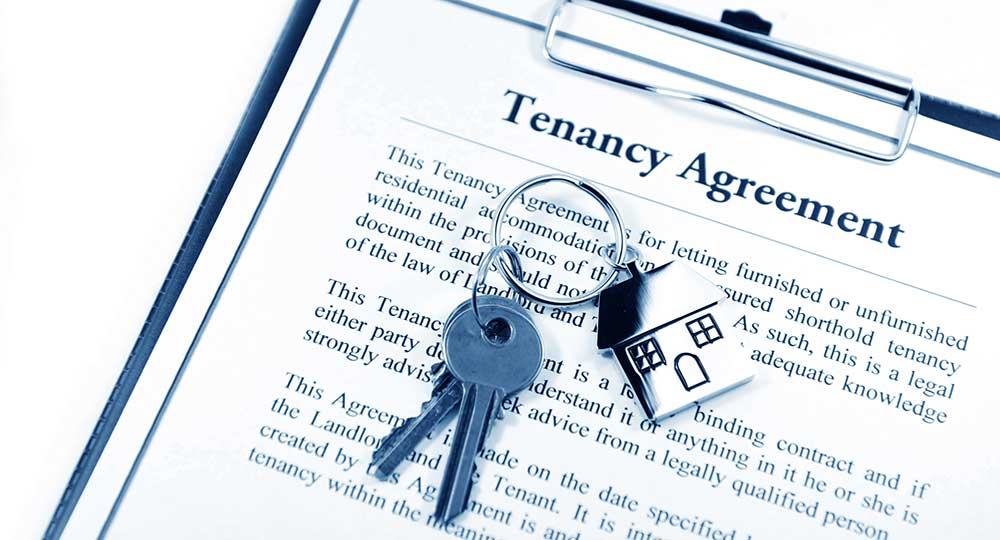Understanding the Tenancy Agreement
As a legal contract between a landlord and tenant, a tenancy agreement serves as a comprehensive guide outlining the terms and responsibilities of both parties. It defines the rights and obligations of each party and provides a legal framework for resolving any disputes that may arise during the tenancy period.
Entering into a Tenancy Agreement
A tenancy agreement (“TA”) or commonly referred to as “perjanjian sewa” in Malay, can be entered in writing or verbally. The TA need not be in writing to be valid under the law; an oral agreement is just as good. However, the oral tenancy would be more onerous and take longer to resolve disputes because there is no specific set of rules for resolving issues that may arise due to the parties’ contractual relationship.
A written TA clarifies the roles and duties of all parties involved on the paper. Although an oral tenancy agreement is legally binding, it is best practice.Tenants and landlords alike can benefit from having their obligations spelt out in writing.
In Malaysia, there is no specific law or legal framework governing tenancy. Nonetheless, it has a well-established system in which it is common for a tenancy agreement to be drafted, prepared, signed, and witnessed (typically by a lawyer) within 7 to 14 days after the security deposit payment. Without specific legislation to regulate tenancy, TAs in Malaysia have been drafted with the guidance of these existing laws, including the Contracts Act 1950, Civil Law Act 1956, Distress Act 1951, and Specific Relief Act 1950.
Components of a Tenancy Agreement
There is no standard template for a tenancy agreement, but in general terms and traditional practices, a standard tenancy agreement should include the following provisos:
(1) Details of the property
The TA must provide a detailed description of the property. This includes the property type (like an apartment, house, or condo), location, and defining features or characteristics. This section of the agreement serves to identify the property in question and differentiate it from others.
It is also essential to specify whether the tenant will rent the entire property or only a portion of it (e.g., only the master bedroom). Another critical element of the tenancy agreement is the property’s condition at the start of the tenancy. This includes any existing damage or issues that need to be acknowledged by both parties to avoid disputes at the end of the tenancy period. The TA may have a schedule that details the fixtures, furnishings, and appliances that come with the property. If the landlord is renting out a vacant unit, there is no need to include this inventory list.
(2) Clauses on deposits
The tenancy agreement must specify the three separate deposits a tenant must pay. Here is a summary of the deposits:
- Security Deposit – This security deposit is intended to act as a guarantee for the performance of the terms and conditions outlined in the TA. Two months’ rent is the standard security deposit amount, typically returned at the end of the tenancy. At the end of the tenancy period, if the tenant fails to pay rental arrears (if any) or damages found to the property were the tenant’s fault, the landlord is entitled to keep the security deposit.
- Earnest Deposit– This payment serves as a reservation deposit to guarantee that the landlord will not rent the property to anybody else once the offer letter to rent has been issued.
- Utility Deposit– The landlord can use the utility bill deposit to cover utility bill costs in the event of a tenant default. If there are no outstanding utility bills at the end of your rental, your utility deposit will be repaid in full.
(3) Monthly rental and manner of payment
The due date and method of payment (e.g., electronic funds transfer, cheque, or cash) for the monthly rent and any other fees (such as maintenance fees and utility bills) must be specified in this section. If the tenant pays the rent after the due date or does not pay it at all, the landlord may want to include the specifics of the repercussions of any of these situations in this section.
(4) Rights and Responsibilities as a Tenant or Landlord
The tenancy agreement is a legally binding document that clearly outlines the landlord’s and tenant’s rights and responsibilities. Both parties must understand and fulfil their obligations stipulated in the agreement for the tenancy to proceed smoothly. The agreement should spell out that the landlord is responsible for the following, among other things:
- To pay the real property gain tax (RPGT) to the Lembaga Hasil Dalam Negeri (LHDN);
- To provide a habitable and rentable property with working fixtures, furniture, and appliances (if the rental is a furnished unit);
- To grant the tenant quiet, uninterrupted use of the property without interference from the landlord; and
- To insure the property against fire loss or damage by paying the insurance premium.
Tenant’s obligations should include, but are not limited to, the following:
- To use the property for lawful and moral purposes only;
- To pay rent on time;
- Not to make any structural changes or renovation to the property without Landlord’s consent; and
- To not sublet the property without Landlord’s consent.
Failure to fulfil these responsibilities can result in legal action.
(5) Rental Period and Renewal Option
When signing a tenancy agreement, the parties must specify the desired duration of the tenancy. A rental period typically lasts between one and three years; if it extends beyond three years, it is considered a lease rather than a tenancy. The difference between a lease and a tenancy must be discussed separately. At a glance, a lease is a rental for a longer duration (must be at least three years), and unlike a tenancy agreement, a lease agreement must be registered at the Land Office under the National Land Code 1965. However, parties may still endorse a TA by submitting a written application to the Land Office Registrar. The effect of registration and endorsement is to offer statutory protections under the NLC for the lease or tenancy agreement.
Regarding the tenancy period, a TA must be dated, and the dates at which it begins, and ends must be made clear. Parties may also include a clause granting the tenant the right to renew or extend the TA for a specified period following the expiration date of the initial TA. If the parties consent to extend the tenancy, a new TA must be drafted so that a new tenancy cycle can commence. The new TA may or may not include adding new clauses or removing existing clauses, depending on what the landlord and tenant have agreed upon.
(6) Length of Notice and Early Termination of Tenancy
A TA should define a notice period to end the tenancy, stating how long the written notice should be given. In a termination clause, either party can request an early termination of the tenancy. Before terminating a tenancy, each tenant must notify their landlord.
Sometimes, a tenant may need to terminate the tenancy agreement before the end date. This is often a complex and delicate issue involving potential financial penalties. A tenancy agreement typically contains a clause allowing for early termination under specific conditions, such as a job transfer or health issues. The tenant must usually provide sufficient notice and may be liable for rent until a new tenant is found or the lease ends. In certain instances, the landlord may also request an early termination from the tenant; if this is the case, the tenant may legally terminate the TA without penalty.
Note: Always consult a legal advisor before terminating a tenancy agreement early to understand your rights and financial liabilities.
(7) Payment of stamp duty
After signing a TA, the parties must present a copy or copies of the agreement to the nearest office of the Malaysian Inland Revenue Board (IRB) to be stamped. An unstamped agreement is still a valid agreement. However, it will only be admissible as evidence in court if IRB stamps it. As a result, it is customary for the authority to seal and stamp the TA in exchange for a prescribed fee known as stamp duty.
According to the third schedule of the Stamp Act of 1949, the tenant is responsible for paying stamp duty fees. The TA stamp duty is computed based on every RM250 from the annual rental amount. Below is the formula for calculating the stamp duty payable to IRB.
| DURATION OF TENANCY | AMOUNT CHARGED FOR EVERY RM250 (RINGGIT MALAYSIA) FROM THE TOTAL OF ANNUAL RENT |
| 1 year or less | RM1 |
| less than 1 year to 3 years | RM2 |
| 3 years and onwards | RM3 |
Based on the table above, for every tenancy period of less than 1 year, the stamp duty is calculated at RM1 per RM250 of the annual rental amount. If your tenancy period is between 1 to 3 years, the stamp duty would be RM2 per RM250 and RM3 per RM250 of the total annual rent if the tenancy exceeds 3 years and onwards.
* The first RM2,400 in annual rental income is exempt from stamp duty. When calculating the stamp duty fee, you must subtract RM2400 from the yearly rental amount to determine the final taxable amount.
As an example, if a tenant is signing a tenancy agreement of 2 years and agreeing to pay a rent of RM2500 monthly, the calculation of stamp duty would be as follows:
- [RM2500 × 12 months] – RM2400 = RM27,600
- RM27,600 ÷ RM250 = RM110.40
- RM110.40 ×RM2= RM220.80
In practice, two original copies of TA need to be stamped, each for the landlord and tenant. The additional copy of the stamped TA is charged at RM10. Therefore, as per the above example, the amount of stamp duty would be RM230.80 for two copies of stamped TA. You can estimate the rough amount of your stamp duty using the online calculator here.
Conclusion
The thought of saving money on legal fees may be appealing, but landlords are strongly encouraged to engage with a lawyer to ensure that the TA contains all the necessary details. Therefore, it is prudent for landlords to seek professional legal counsel when drafting a tenancy agreement. If things go wrong, an agreement drafted by a competent and qualified lawyer can assist in reducing the likelihood of conflicts and their impact on both parties.
A well-written tenancy agreement can significantly mitigate potential disputes, safeguarding the interests of both parties involved and serves as a protective barrier to both the landlord and the tenant. From the landlord’s perspective, the TA guarantees the security of their rental income and stipulates that the tenant is responsible for maintaining the property’s condition. Conversely, the agreement affirms the tenant’s right to occupy the property for a specified duration. It outlines the circumstances under which the landlord may reclaim possession of the property.



